| Listing 1 - 10 of 14 | << page >> |
Sort by
|
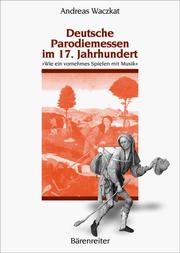
ISBN: 3761814844 Year: 2000 Publisher: Kassel Bärenreiter
Abstract | Keywords | Export | Availability | Bookmark
 Loading...
Loading...Choose an application
- Reference Manager
- EndNote
- RefWorks (Direct export to RefWorks)
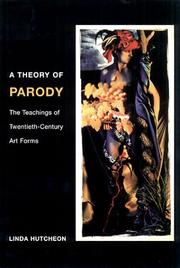
ISBN: 0252069382 9780252069383 Year: 2000 Publisher: Urbana Chicago : University of Illinois Press,
Abstract | Keywords | Export | Availability | Bookmark
 Loading...
Loading...Choose an application
- Reference Manager
- EndNote
- RefWorks (Direct export to RefWorks)
In this major study of a flexible and multifaceted mode of expression, Linda Hutcheon looks at works of modern literature, visual art, music, film, theater, and architecture to arrive at a comprehensive assessment of what parody is and what it does. Hutcheon identifies parody as one of the major forms of modern self-reflexivity, one that marks the intersection of invention and critique and offers an important mode of coming to terms with the texts and discourses of the past. Looking at works as diverse as Tom Stoppard's Rosenkrantz and Guildenstern Are Dead, Brian de Palma's Dressed to Kill, Woody Allen's Zelig, Karlheinz Stockhausen's Hymnen, James Joyce's Ulysses, and Magritte's This Is Not a Pipe, Hutcheon discusses the remarkable range of intent in modern parody while distinguishing it from pastiche, burlesque, travesty, and satire. She shows how parody, through ironic playing with multiple conventions, combines creative expression with critical commentary. Its productive-creative approach to tradition results in a modern recoding that establishes difference at the heart of similarity. In a new introduction, Hutcheon discusses why parody continues to fascinate her and why it is commonly viewed as suspect--for being either too ideologically shifty or too much of a threat to the ownership of intellectual and creative property.
Parody in art. --- Aesthetics, Modern --- Arts, Modern --- 82-7 --- 82.01 --- -Parody in art --- Modern arts --- Humor. Satire --- Esthetica --- -82-7 --- 82.01 Esthetica --- 82-7 Humor. Satire --- -Parody in art. --- -Aesthetics, Modern --- Parody in art --- Aesthetics --- History --- 82-7 Prose satire. Humour, epigram, parody etc. --- Prose satire. Humour, epigram, parody etc. --- Aesthetics, Modern - 20th century. --- Arts, Modern - 20th century. --- Forme (esthétique) --- Art --- Littérature --- Parodie (art) --- Esthétique --- Arts --- 20e siècle --- Thèmes, motifs
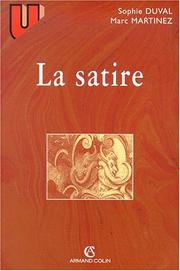
ISBN: 2200250355 9782200250355 Year: 2000 Publisher: Paris : Armand Colin,
Abstract | Keywords | Export | Availability | Bookmark
 Loading...
Loading...Choose an application
- Reference Manager
- EndNote
- RefWorks (Direct export to RefWorks)
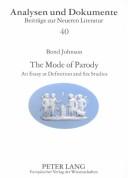
ISBN: 363135729X 0820443808 Year: 2000 Volume: 40 Publisher: Frankfurt am Main Lang
Abstract | Keywords | Export | Availability | Bookmark
 Loading...
Loading...Choose an application
- Reference Manager
- EndNote
- RefWorks (Direct export to RefWorks)
Literature --- Parody. --- Parody in literature. --- Parodies --- European literature --- Parodie --- Parodie dans la littérature --- Littérature européenne --- History and criticism. --- Histoire et critique --- 82-7 --- Humor. Satire --- 82-7 Humor. Satire --- Parodie dans la littérature --- Littérature européenne --- 82-7 Prose satire. Humour, epigram, parody etc. --- Prose satire. Humour, epigram, parody etc.
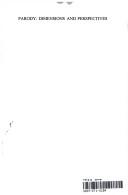
ISBN: 9042002174 1134674279 1134674287 0203451333 1280318988 9780203451335 0203759575 9780203759578 9780415182201 0415182204 9780415182218 0415182212 9786610318988 6610318980 9781134674282 9781280318986 9781134674237 1134674236 9781134674275 Year: 2000 Publisher: London Routledge, Taylor and Francis Group
Abstract | Keywords | Export | Availability | Bookmark
 Loading...
Loading...Choose an application
- Reference Manager
- EndNote
- RefWorks (Direct export to RefWorks)
This lively introduction demonstrates the importance of parody for literary and cultural studies, clearly explaining complex arguments around it.
82-7 --- Humor. Satire --- Parody --- Congresses. --- 82-7 Humor. Satire --- Comic literature --- Literature, Comic --- Travesty --- Satire --- Burlesque (Literature) --- Caricature --- Congresses --- 82-7 Prose satire. Humour, epigram, parody etc. --- Prose satire. Humour, epigram, parody etc. --- Parody. --- Satire. --- Literature --- Wit and humor --- Invective --- Imitation (littérature) --- Burlesque (littérature) --- Parodie (littérature) --- Imitation (littérature) --- Burlesque (littérature) --- Parodie (littérature) --- Literary semiotics
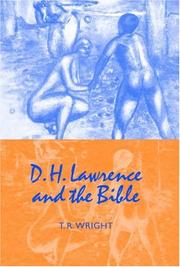
ISBN: 0521781892 Year: 2000 Publisher: Cambridge, UK New York Melbourne Cambridge University Press
Abstract | Keywords | Export | Availability | Bookmark
 Loading...
Loading...Choose an application
- Reference Manager
- EndNote
- RefWorks (Direct export to RefWorks)
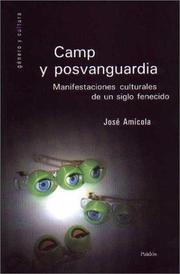
ISBN: 9501238059 Year: 2000 Publisher: Buenos Aires Paidós
Abstract | Keywords | Export | Availability | Bookmark
 Loading...
Loading...Choose an application
- Reference Manager
- EndNote
- RefWorks (Direct export to RefWorks)
Literary semiotics --- Thematology --- Spanish-American literature --- Sociology of culture --- anno 1900-1999 --- Argentine literature --- Camp (Style) --- Kitsch --- Parody. --- Popular culture --- Postmodernism (Literature) --- Sex role in literature. --- History and criticism. --- Camp (Style). --- Parody --- Sex role in literature --- Literary movements --- Literature, Modern --- Modernism (Literature) --- Post-postmodernism (Literature) --- Comic literature --- Literature, Comic --- Travesty --- Satire --- Burlesque (Literature) --- Caricature --- Aesthetics --- History and criticism
Book
ISBN: 2912404312 9782912404312 Year: 2000 Publisher: Paris In Press
Abstract | Keywords | Export | Availability | Bookmark
 Loading...
Loading...Choose an application
- Reference Manager
- EndNote
- RefWorks (Direct export to RefWorks)
Les enfants d'Espagne, de Grande-Bretagne, de Grèce ou de France sont-ils sensibles au même type d'humour ? Sur quelles références culturelles, sur quelles techniques, sur quels ressorts l'humour fonctionne-t-il dans la littérature de jeunesse ?
Children's literature --- Wit and humor x History and criticism v Congresses --- History and criticism --- Congresses --- 82-7 --- 82-93 --- Humor. Satire --- Kinderliteratuur. Jeugdliteratuur --- Conferences - Meetings --- 82-93 Kinderliteratuur. Jeugdliteratuur --- 82-7 Humor. Satire --- 82-7 Prose satire. Humour, epigram, parody etc. --- Prose satire. Humour, epigram, parody etc. --- Children's literature - History and criticism - Congresses --- Wit and humor x History and criticism v Congresses
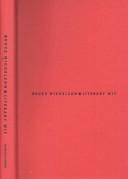
ISBN: 1558492747 Year: 2000 Publisher: Amherst University of Massachusetts press
Abstract | Keywords | Export | Availability | Bookmark
 Loading...
Loading...Choose an application
- Reference Manager
- EndNote
- RefWorks (Direct export to RefWorks)
82-7 --- Humor. Satire --- American literature --- American wit and humor --- English literature --- English wit and humor --- Wit and humor --- History and criticism. --- History and criticism --- Theory, etc. --- Philosophy. --- 82-7 Humor. Satire --- British wit and humor --- History and criticism&delete& --- Theory, etc --- Philosophy --- 82-7 Prose satire. Humour, epigram, parody etc. --- Prose satire. Humour, epigram, parody etc.
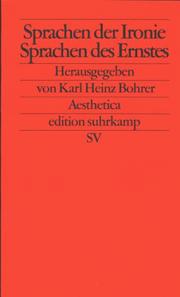
ISBN: 3518120832 Year: 2000 Publisher: Frankfurt am Main Suhrkamp
Abstract | Keywords | Export | Availability | Bookmark
 Loading...
Loading...Choose an application
- Reference Manager
- EndNote
- RefWorks (Direct export to RefWorks)
German literature --- -German literature --- -Irony in literature --- 82-7 --- 830 "17/18" --- History and criticism --- Humor. Satire --- Duitse literatuur--18e en 19e eeuw. Periode 1700-1899.--(eveneens voor boeken over recht periode 1789-1799) --- Irony in literature --- Irony --- 830 "17/18" Duitse literatuur--18e en 19e eeuw. Periode 1700-1899.--(eveneens voor boeken over recht periode 1789-1799) --- 82-7 Humor. Satire --- Sarcasm --- Cynicism --- Rhetoric --- Satire --- Tragic, The --- Understatement --- 82-7 Prose satire. Humour, epigram, parody etc. --- Prose satire. Humour, epigram, parody etc.
| Listing 1 - 10 of 14 | << page >> |
Sort by
|

 Search
Search Feedback
Feedback About UniCat
About UniCat  Help
Help News
News